PCG revises policy on vessel movement during bad weather

The Philippine Coast Guard (PCG) revealed on Tuesday, Sept. 5, that it has implemented a policy revision to allow voyage of sea vessels in select areas even during the bad weather.
Capt. Jomark Angue, deputy chief of Coast Guard Staff for Maritime Safety Services, said the PCG intends to address the economic impact of Memorandum Circular Number 03-01 issued on Feb. 2, 2001 which "ultimately prohibits all vessels from engaging into a voyage whenever there is a typhoon signal hoisted at the port of origin, destination, and the intended route of the vessel."
“The Coast Guard has recently revised our policy on the movement of ships during heavy weather. Our previous policy is a decade old policy,” Angue said.
“We conducted an assessment and it turned out this policy has a big impact on the economy and livelihood of our people particularly those situated in island municipalities and island provinces,” he added.
Under the revised policy, Angue said that certain passenger and cargo vessels will now be allowed to sail in areas considered as main supply routes and those which have short distance voyages but only during the declaration of Typhoon Signal Number 1.
“During the declaration of Typhoon Signal Number 1, we now have certain types of vessels that will be allowed to sail depending on the ship's size and the characteristics of the routes,” he explained.
A maritime safety advisory released by the PCG showed the following vessels that will be allowed to sail during inclement weather in the absence of weather bulletin:
- 16 gross tons (GT) and above for Bueafort Scale 4 (moderate breeze, 11-to 16 kilometers per hour (kph) windspeed, and 1.25 to 2.5 meters wave height)
- 36 GT and above for Bueafort Scale 5 (fresh breeze, 17 to 21 kph windspeed, and 2 to 3 meters wave height)
- 251 GT and above for Bueafort Scale 6 or with gale warning (strong winds, 22 to 33 kph windspeed, and 3 to 4 meters wave height)
- 701 GT and above for Beaufort Scale 9 (gale force winds, 41 to 47 kph windspeed, and 7 to 10 m wave height)
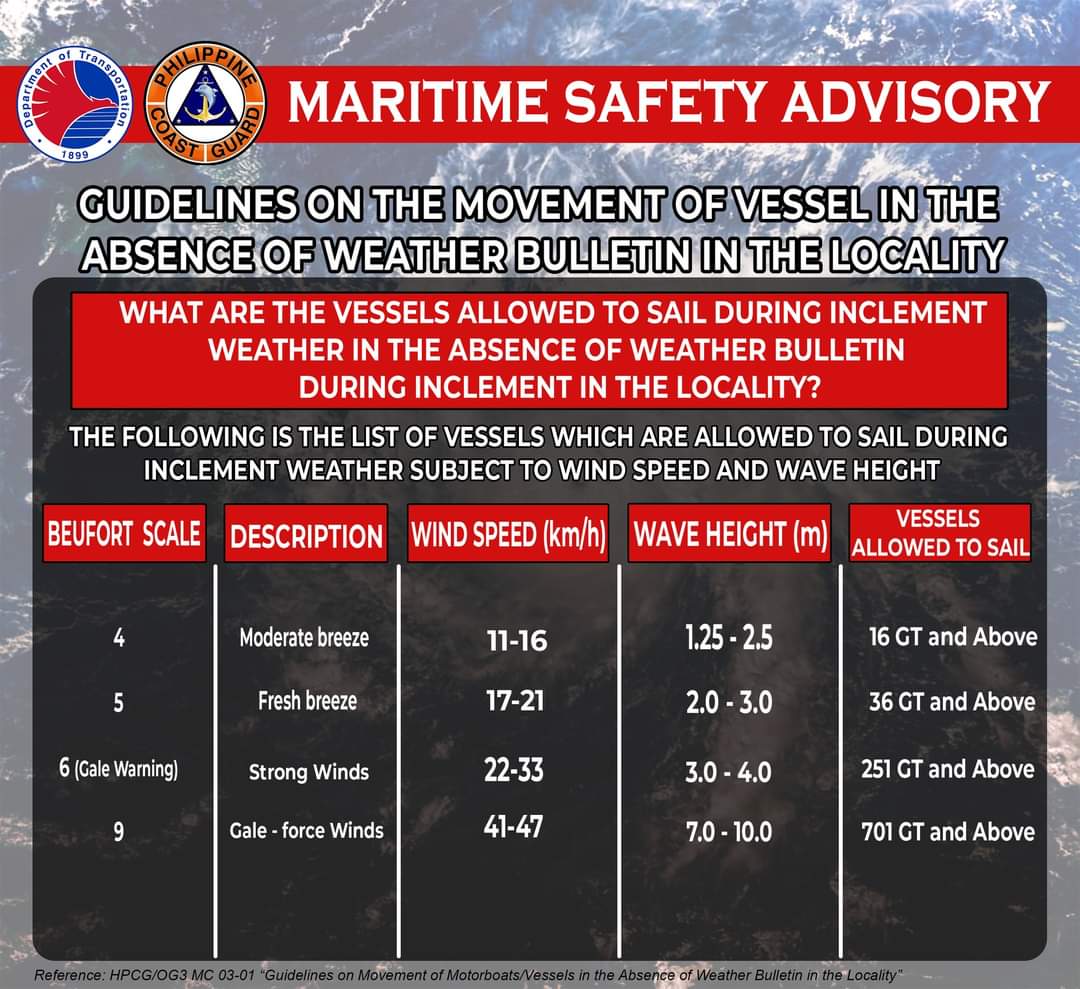
There are 39 areas considered as main supply routes in Southern Tagalog, Western Visayas, Central Visayas, Eastern Visayas, Northern Mindanao, and Eastern Mindanao.
Meanwhile, there are 31 areas considered as short distance voyages in different parts of the country.
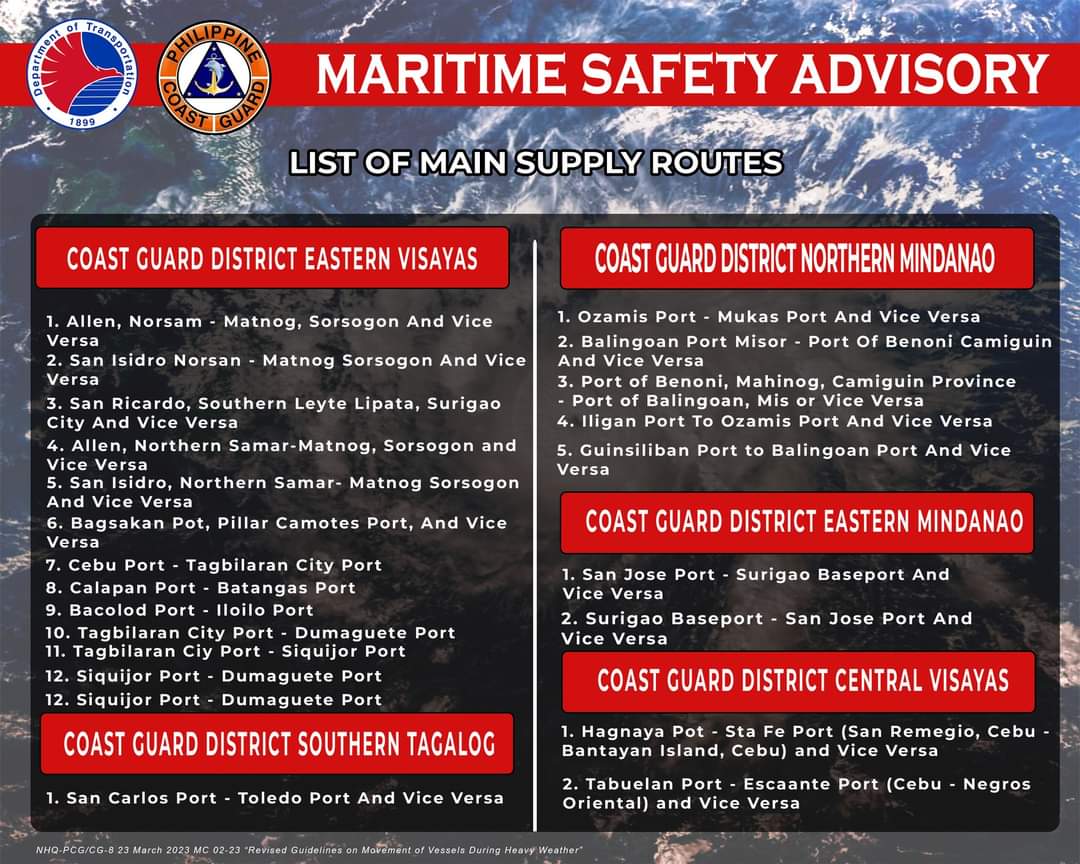
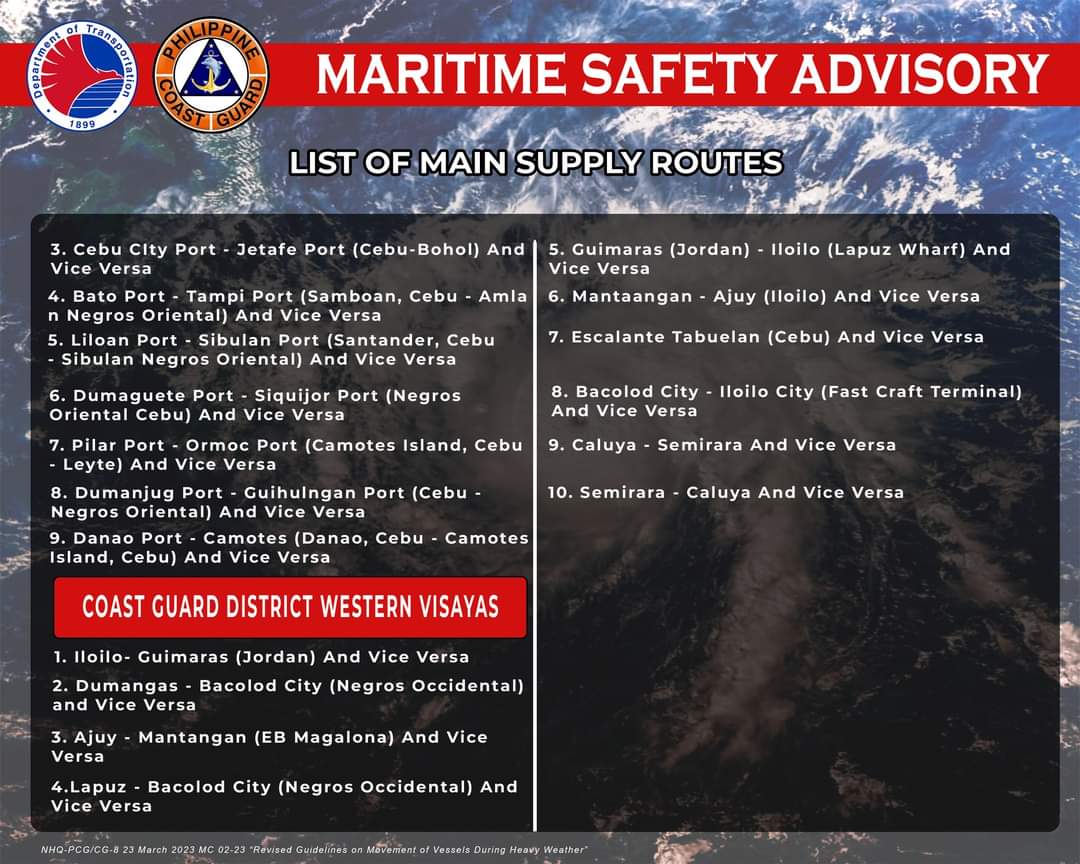
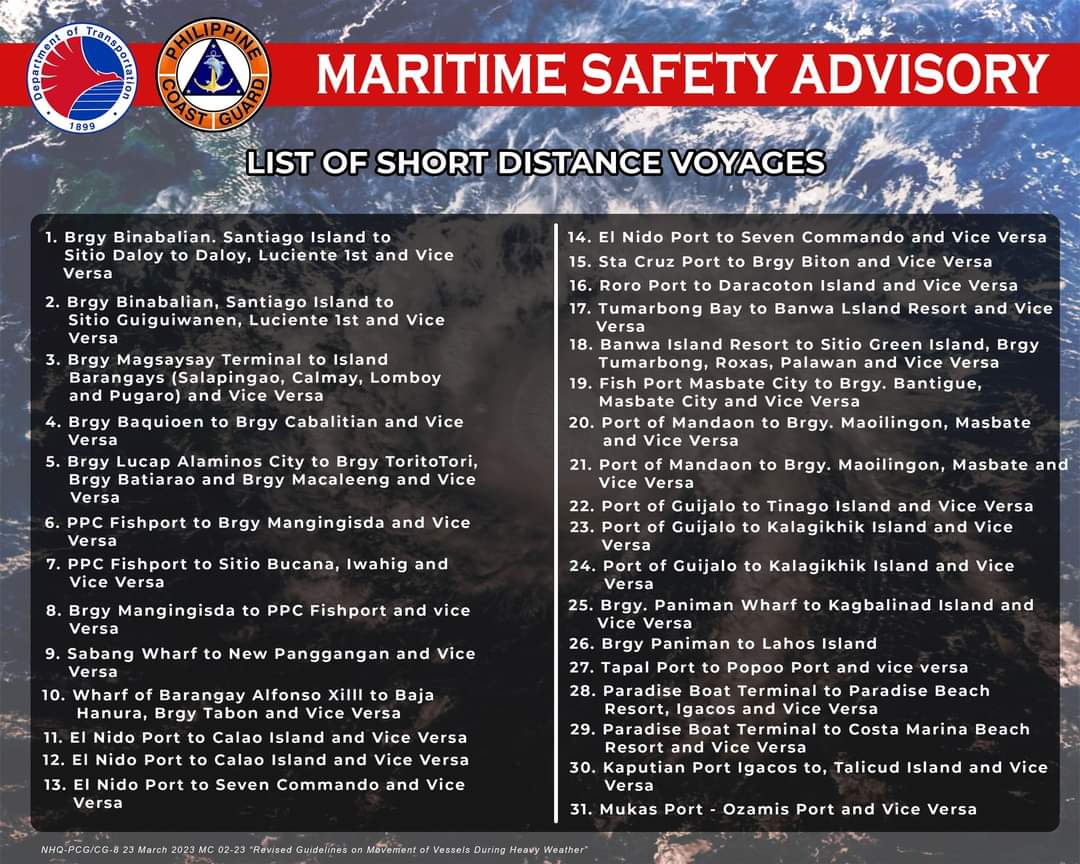
Angue explained that in the previous policy, the basic commodities could not reach island munciipalities and provinces as trips of vessels were already cancelled even in areas under Typhoon Signal Number 1.
“We have seen that it has a big impact as some of the commodities could not reach those areas. There was no food for people to buy in addition to their predicament of being typhoon victims. Or in some cases, Typhoon Signal Number 1 is raised even if it has no effect yet on a locality but we already cancel the trips,” he said.
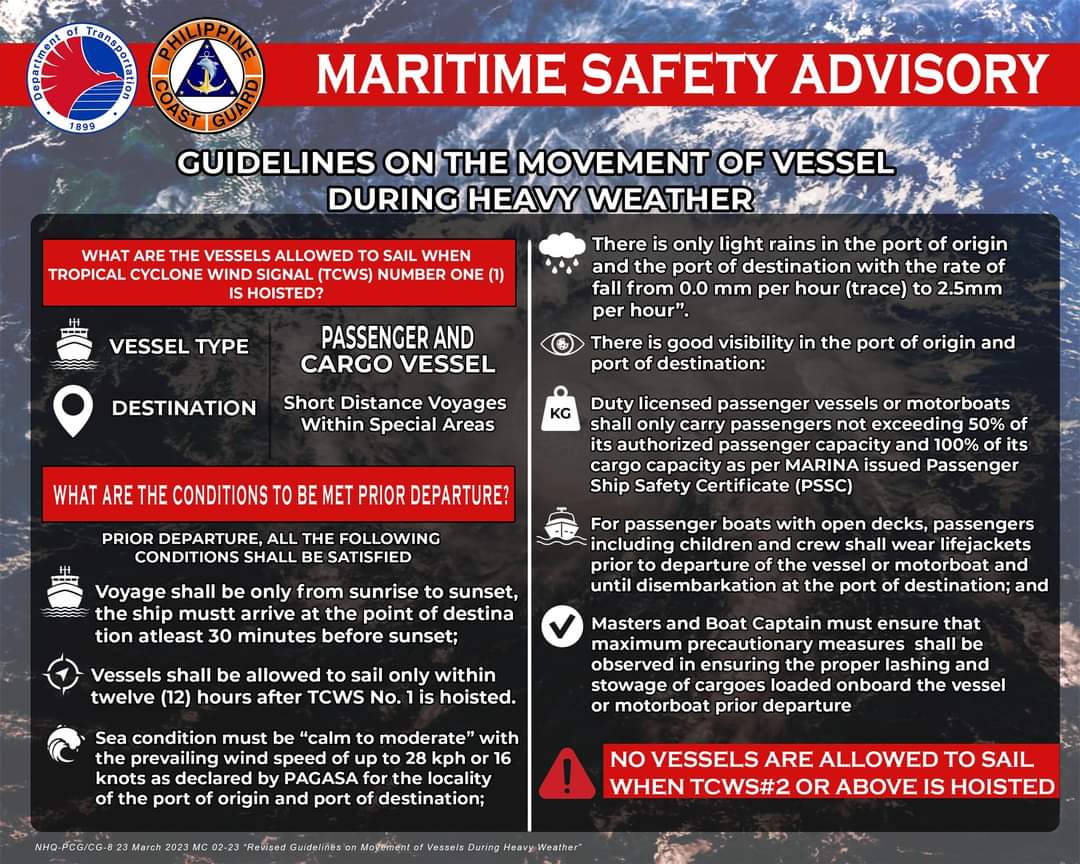
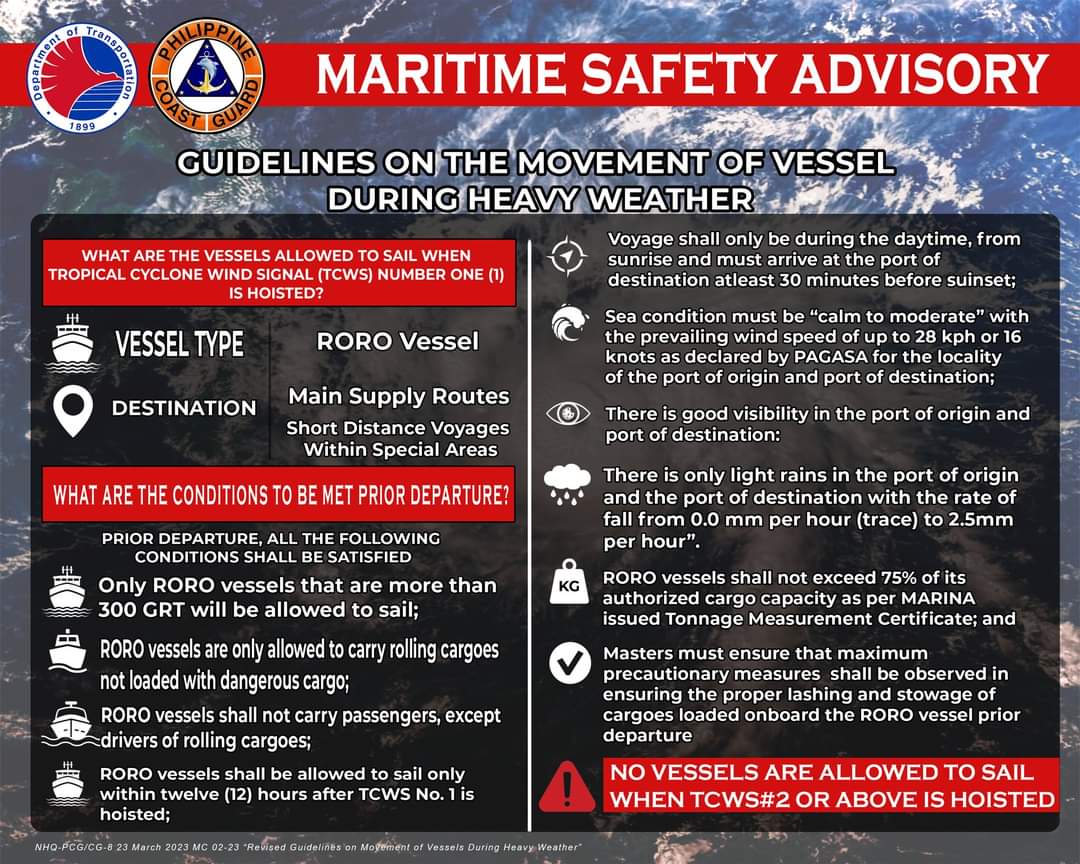
The PCG, however, assured that safety measures were considered in implementing changes on their policy.
“The only difference is that this will not be part of regular trips by the vessels. The ships will not be following their regular schedule. Instead, it will sail during daytime to maximize visibility and to prevent exposing the vessel and the passengers to danger,” Angue said.
“[Through] this policy, we will be more flexible without sacrificing the safety of our passengers, of the vessel, and the cargo,” he added.